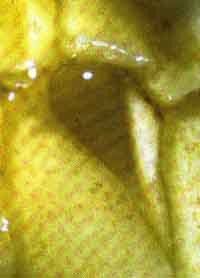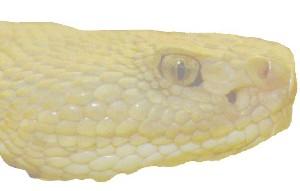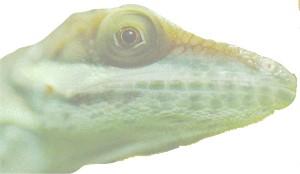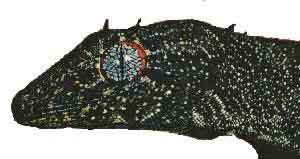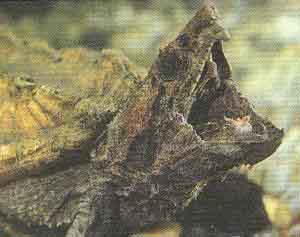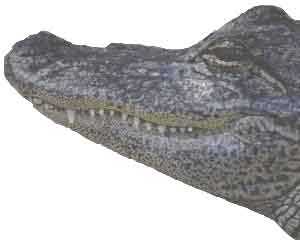lined link to go to subject)
Chapter 1. Vision
System Design
Chapter 2. Biological Eye Designs
Chapter 3.
Eye
Design
Illustrations
A.
Plant
light sensing
1.
Grass, simple vines,
and stems
2.
Flowers
B.
Lower
animal eyes
1.
Flatworms
2.
Clams and Scallops
3.
Nautilus
4.
Shrimp
5.
Crab
6.
Octopus and
giant squid
7.
Spiders
8.
Scorpions
8.
Brittle Star
C.
Insect
eyes
1.
Bees
2. Dragonflies
3. Butterflies
4.
Flies
5.
Ants
6.
Moths
7.
Beetles
8.
Wasp
D. Fish
eyes
1.
Shark
2.
Flounder
3.
Four-eyed fish
E.
Amphibian
eyes
1. Frog
2.
Salamander
F.
Reptile
eyes
1. Boa
constrictor
2.
Rattle
snake
3.
Lizard
4.
Turtle
5.
Crocodile
and
alligators
G. Bird
eyes
1.
Eagles
2.
Hummingbirds
3. Owls
4.
Ostrich
5.
Cormorants
H.
Mammal
eyes
1.
Whales
2.
Elephants
3. Lions,
tigers, and
other cats
4.
Monkeys
5. Rats
and mice
6. Bats
7.
Tarsier
I.
Human
eyes
1. Iris
2. Lens
3.
Retina
Chapter
4. Eye
Reproduction
Chapter
5. Optical
Systems
Design
Chapter
6. The Eye Designer
Related
Links
Appendix
A - Slide Show & Conference Speech by Curt Deckert
Appendix
B - Conference Speech by Curt Deckert
Appendix
C - Comments From Our Readers
Appendix
D - Panicked Evolutionists: The Stephen Meyer Controversy
Chapter 3
Section F
(Click on PICTURE IN TEXT to bring up LARGE PICTURE)
3. EYE DESIGN ILLUSTRATIONS
F.
Reptile eyes
Reptiles have a rich
history, including some very large animals that are now extinct. The
eyes of extinct creatures may have been more complex than many eyes of
previously discussed animals. In some cases, reptile eyes may have
features beyond the capabilities of the amphibian. This is partially
evidenced by the order of hunting, where the reptile hunts the
amphibian.
1.
Boa constrictor
The boa constrictor
is nonvenomous and has color vision, some also have extended infra-red
(IR) vision well beyond where humans can see. This enables it
to sense temperature differences of less than 0.03 degrees centigrade
at a significant distance, and thus find live targets in dense rain
forests. Their IR vision system is being studied by the military to see
how such a detector, useful for night vision, can function without
being cooled to a very low temperature. (Figure 3.32 from p 204,
Readers Digest, Exploring the
Secrets of Nature, 1994) (Figure
3.32b from p 61, and figure 3.32c from p 64, Reptiles
& Amphibians)
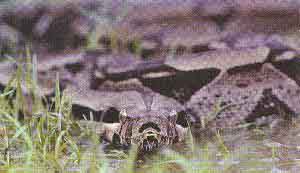
click on small graphic) |
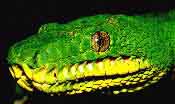
Tree Boa Eyes. |
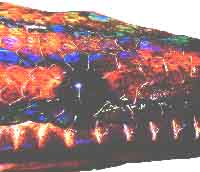
Rainbow Boa Eyes. |
2. Rattlesnake
The rattlesnake is a smaller pit viper that lives in drier, less vegetated areas of the earth. They need to see small living targets in open areas. These snakes can sense very small temperature differences of about 0.05 degree centigrade and find warm targets to attack without visible light. These targets, invisible to human eyes at night, require vision in the infrared spectral range. Because of their vision in the infrared (IR) spectral region, these snakes have the ability to hunt and attack at any time. This compact and efficient IR vision capability is also desirable for current military equipment developments. (Rattlesnake photos by Bruce Chambers)
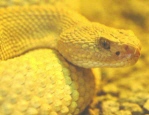
Island Rattlesnake. |

Island Rattlesnake. |
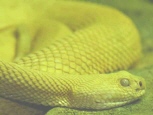
Diamondback Rattlesnake |
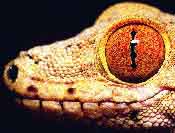
Reptiles & Amphibians |
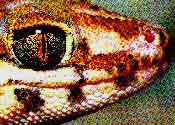
Reptiles & Amphibians |
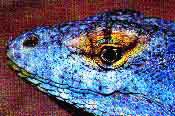
Reptiles & Amphibians |

Chameleon Eyes, p 48 Reptiles & Amphibians |
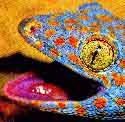
Tokay Gecko Eyes, p 23 Reptiles & Amphibians |
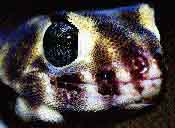
Wonder Gecko Eyes, p 26 Reptiles & Amphibians |
4. Turtles
Turtles do not see
as well as humans. Their retina is made up primarily of cones. Eye
lenses are flat for land turtles, and more spherical for sea turtles.
Special oil ducts emit droplets in turtle eyes. This oil is
used for optical color filtering, much like filtering in
some bird eyes. Their vision is best in the yellows, oranges,
and reds. If disturbed, they can retract their head into their bodies
to protect their eyes. Turtles lay eggs in the same area year after
year. Some may even travel with their eyes closed. They must have
significant navigation capability in addition to vision as we know it.
This would indicate some intelligence beyond that connected to visual
capability. (P. 168, Readers Digest, Exploring
the Secrets of Nature, 1994)
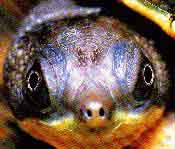
Guinea Snapping Eyes, p 71 Reptiles & Amphibians |
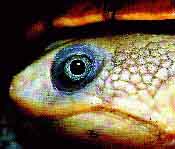
p 77 Reptiles & Amphibians |
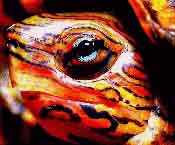
Wood Turtle Eyes, p 81 Reptiles & Amphibians |
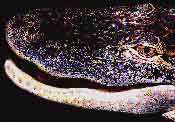
Alligator Eyes, p 82 Reptiles & Amphibians |
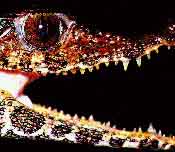
Smooth-Fronted Caiman Eyes, p 83 Reptiles & Amphibians |
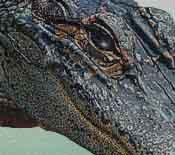
Alligator Eyes |
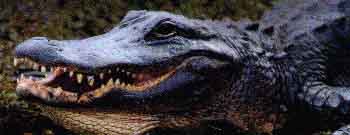
|
Alligator Eyes |
(Figures 3.32 through 3.37, where cited, from Reptiles & Amphibians, used by permission of the photographer and copyright owner Ryu Uchiyama, and the publisher, Chronicle Books, San Francisco, CA 94105)
